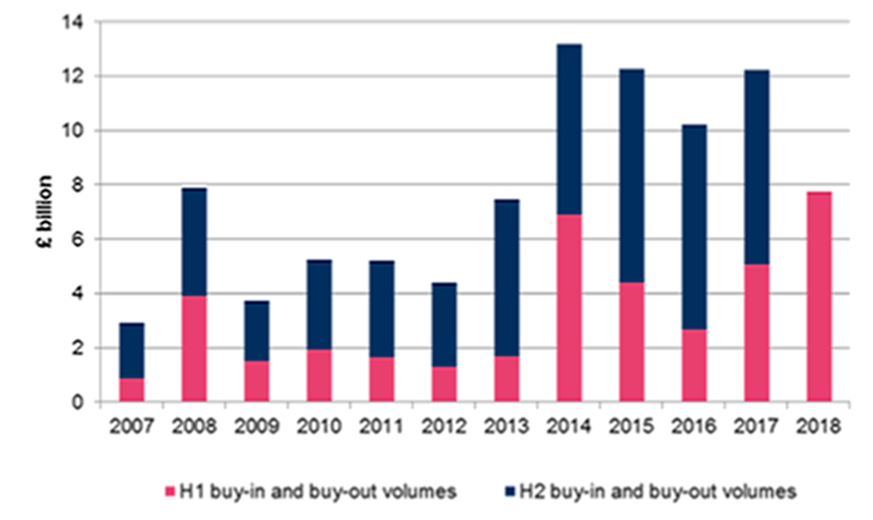On the go: UK pension schemes entered into a record £7.8bn of buy-ins and buyouts in the first half of 2018, as large 'back-book' transfers between insurers failed to disrupt the market's capacity.
Bulk annuity transfers for the same period in 2017 totalled £5.1bn, and went on to reach £12.25bn. According to consultancy LCP, 2018 looks set to comfortably pass £15bn.
H1 2018 also saw large quantities of other risk transfers, including the £12bn transfer of Prudential's back-book portfolio to Rothesay Life. With longevity swaps also being written by insurers for schemes including National Grid, total risk transfers amounted to £21.8bn.
Charlie Finch, partner at LCP, said the rise was partly driven by "arguably the best insurer pricing in 10 years" and improved defined benefit funding levels.
"The challenge for insurers is scaling up to process the higher number of transactions and to source the greater volume of assets necessary to continue to offer pricing at current attractive levels," he said. "Pension plans should step back and consider their strategy for approaching the market. We already have a queue of transactions targeting 2019. I am confident that there will continue to be attractive opportunities, but in a busier market they may be harder to access.”

Source: LCP
The largest single deal was a £1.4bn buy-in for the M&S Pension Scheme, split between Aviva and Phoenix Life. Pension Insurance Corporation and Aviva were the two most active insurers in the market, with Scottish Widows increasing its capacity to capture the third-largest share of deals at 14 per cent.
Another consultancy, Hymans Robertson, said it is likely that total risk transfer will break £35bn this year, but its risk transfer specialist Kieran Mistry said attractive pricing means "the end of 2018 may not bring the peak in competitive pricing the market has come to expect".
Those dynamics mean schemes will have to compete for insurers' attention, he said: "Trustees and sponsors will have to be smarter and more patient to get the best outcome for their schemes, and understanding insurance and reinsurance company dynamics and priorities is more important than ever."














